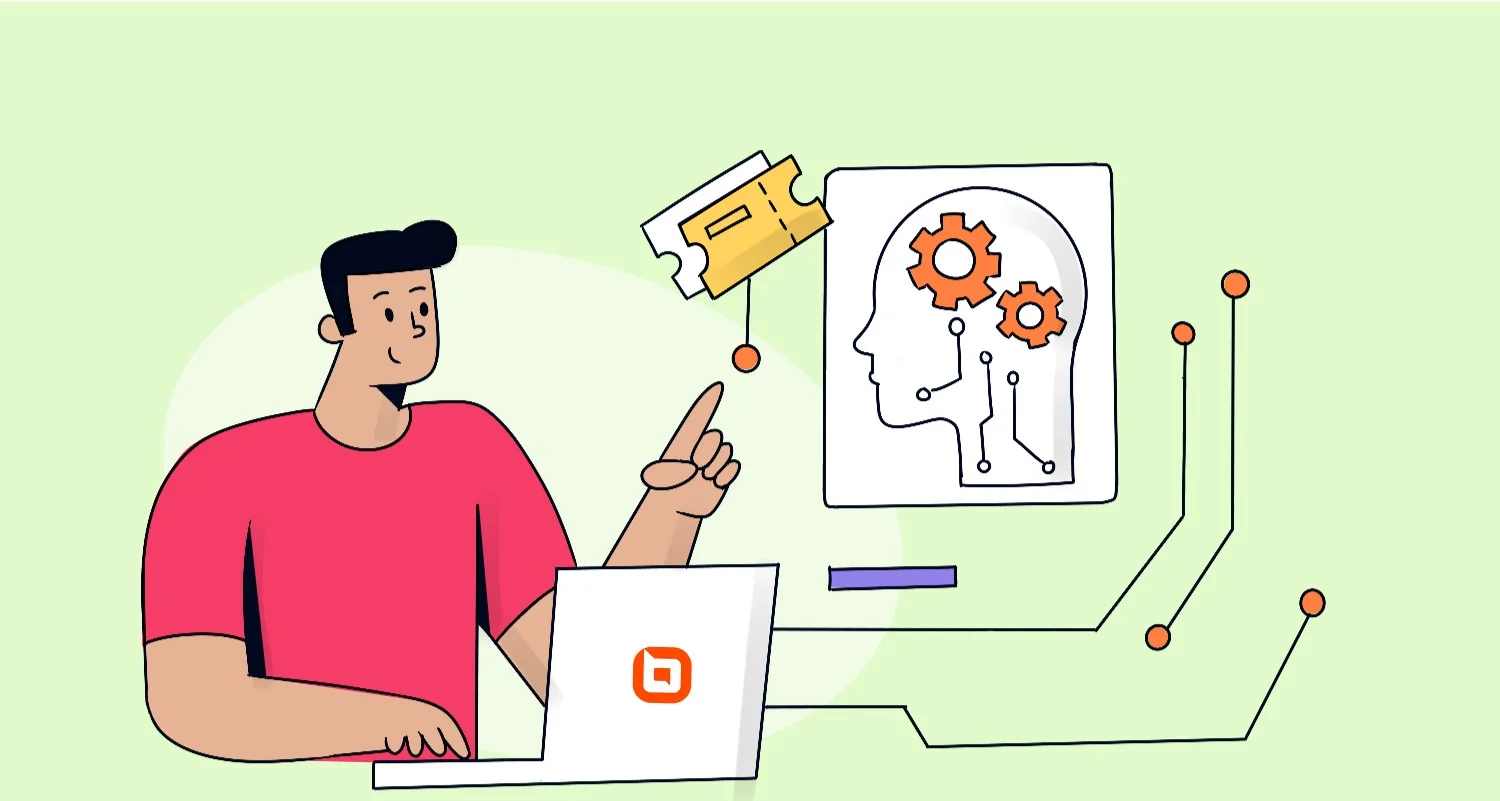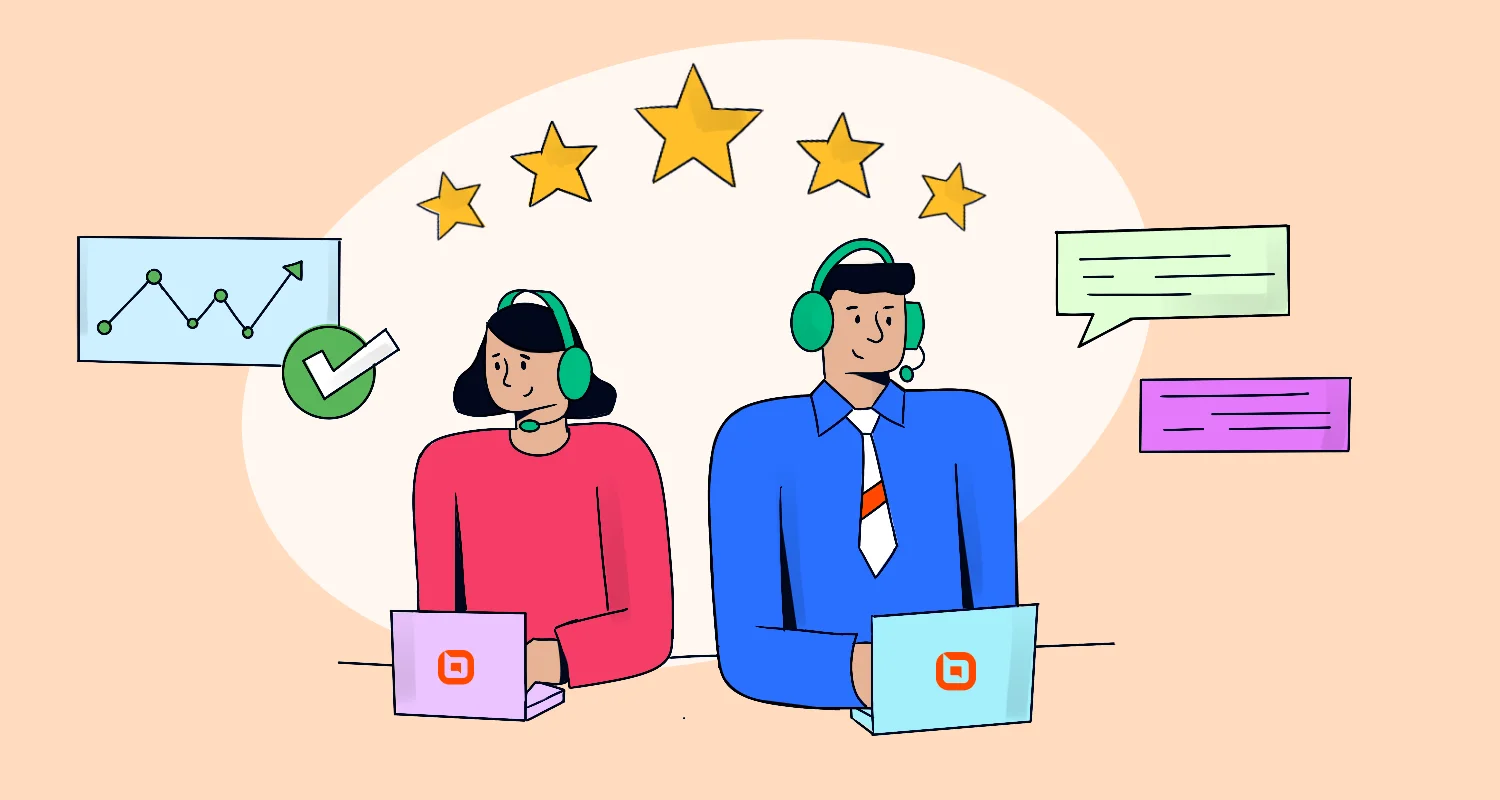Many businesses underestimate the level of effort required to deliver high customer value. In the current market, customers prioritize finding solutions to their problems over exclusively considering price or quality.
Recognizing the importance of valuing your customers goes beyond just profits, as businesses must prioritize customer acquisition in a competitive market.
Customers appreciate companies that streamline their lives and enhance their overall satisfaction. They believe their purchase’s benefits should outweigh the cost they incur.
In this blog, we will explore how to measure customer value and the practical strategies that help you enhance the value you provide to customers.
What is customer value?
Customer value can be described as what customers think and how they view the worth of a product or service, considering all the costs and benefits involved.
It contains both real benefits like functionality, and quality, as well as things like customer satisfaction and brand reputation.
For instance, software offering the same functionalities can have a higher customer value for a company using it across all departments, compared to just using it in one, because the impact on their operations is wider.
How to measure customer value
Measuring involves the process of determining a customer’s value to your organization during their engagement with your company.

Determine all the related customer benefits
Identifying customers’ benefits is crucial for measuring customer value, as it provides insight into what customers truly value about a product or service.
Benefits come in two main categories: the functional value of the product or service itself and the value of the service experience (think helpful customer support).
By understanding the specific benefits customers get, businesses can tailor their offerings to better meet customer needs and preferences.
Here are a few benefits you can consider:
- The standard of your product or service
- The quality of customer service you provide
- The effectiveness of your support teams
- The input-to-issue resolution time
Consider customer cost
There are two types of customer costs: tangible costs and intangible costs.
Tangible costs are expenses that can be easily measured, including physical assets, while intangible costs are expenses that are difficult to measure.
When assessing customer expenses, it is beneficial to distinguish between tangible and intangible costs.
| Tangible costs | Intangible costs |
|
|
Differentiating these two costs allows for the calculation of the overall monetary expenditure and facilitates comparison with other costs.
By comparing the revenue generated from customers against the costs associated with acquiring and serving them, businesses can determine the net value.
Assess if the benefits exceed the disadvantages
Evaluating your customer value requires dedication and time, the knowledge you acquire will be extremely valuable.
Formula to calculate customer value
To determine net value, find the differences between total customer benefits and total customer costs.

By assessing the benefits customers receive against the associated costs, companies can determine whether the value provided outweighs the investments made.
This also helps businesses make informed decisions about resource allocation and customer relationship management strategies.
This approach enables businesses to improve their operations, enhance customer satisfaction, and drive sustainable growth.
9 Best practices to increase customer value
Customer value goes beyond just price. It’s all about how a product or service solves a problem, benefiting both the individual and the organization.
This value is subjective, meaning it’s unique to each buyer and influenced by factors like their experience.
Even though everyone pays the same price, the value they receive can differ greatly. Let’s dive into how to create customer value and increase it.
Understand your customer needs and expectations
To create customer value, it is crucial to understand what your customers truly need and expect from your products or services.
This requires conducting thorough market research, collecting feedback from customers, and analyzing trends in the industry.
According to a Gartner report, when customers receive added value during a service interaction, their chances of repurchasing or renewing increase by 86%.
By understanding, and enhancing their needs and expectations, you can tailor your offerings to meet their requirements effectively.
Provide quality products or services
Customers are more likely to stay loyal to a brand that consistently delivers high-quality offerings.
You can exceed customer expectations and differentiate yourself from competitors by investing in the following:
- Product development
- Continuous product improvement
- Quality assurance and control processes
Build strong customer relationships
By engaging with customers on a personal level, demonstrating empathy, and providing exceptional customer service, you can cultivate loyalty and trust.

Encourage open communication with customers, address their concerns promptly, and show appreciation for their business.
Establishing a positive relationship with customers can help them recognize the value of your products or services, potentially resulting in continued purchases.
Make customer experience a priority
Focusing on excellent customer service is directly linked to enhancing customer value. By consistently exceeding customer expectations and delivering exceptional customer service experiences, companies can build strong customer loyalty.
Satisfied customers are more inclined to recommend a business to others, leading to positive word-of-mouth referrals and an expansion of the customer network.
This not only solidifies the company’s reputation but also attracts new customers, thereby increasing the overall value of the customer base, fostering long-term relationships with customers.
Empower your customer support team
Investing in employee training and empowerment directly contributes to increasing customer value by enhancing the quality of customer service.
Empowered employees will be better equipped with relevant skills and knowledge to handle inquiries efficiently and empathetically.
As a result, they can resolve customer issues quickly and provide personalized customer service, ultimately leaving a positive impression on customers.
Provide multichannel options to your customers
Determine the communication channels your target audience spends more time on, and then ensure that you use those channels to show that customer opinions are valued.
Provide support over a range of channels, including email, phone, live chat support, messaging, and community forums, to enable clients to reach you on their preferred platforms.
The ability to continue discussions across multiple channels enables smooth, dependable customer interactions, therefore increasing overall customer value.
Prioritize personalization and customization
Use data from customer service analytics and customer insights to create personalized support that resonate with your target audience.
By understanding your customers’ perceptions, behaviors, and needs, you can tailor your products and services to meet their requirements.
For instance, you can implement comprehensive help desk software with features such as:
- Customer portal
- Customizable email templates
- Mobile app
- Customization functionalities like @-mentions, and private notes
Whether it’s recommending relevant products, sending personalized offers, or providing customized solutions, personalization can significantly enhance the overall customer experience.
Leverage your customers’ feedback
By actively seeking feedback from customers through surveys, reviews, community forums, and social media, you can gain valuable insights into their experiences and preferences.
Use this feedback to make data-driven decisions that lead to improvements in your products, services, and overall customer experience.

By acting on the customer feedback loop, you demonstrate that you value customers’ opinions and you are committed to meeting their needs.
Implementing loyalty programs
Offer incentives such as discounts, exclusive deals, or reward points for every purchase to incentivize customers to choose your brand over competitors.
By rewarding customers for their loyalty, you can create a sense of appreciation and belonging that strengthens the customer-brand relationship.
Design loyalty programs that align with your target audience’s preferences and encourage ongoing customer engagement with your brand.
Loyalty programs and incentives effectively increase customer value and encourage repeat business.
Why is customer value important?
Providing value to consumers is essential to preserving long-term connections with current clients and gaining repeat business. Addressing client needs and desires and understanding how they evolve are crucial.
- Boost customer retention: Customers who feel that the company is meeting their values are more likely to return for repeat purchases.
- Competitive advantage: When a business can offer higher value than its competitors, it can attract more customers and gain a competitive edge.
- Enhance brand loyalty: Customers who consistently receive value from a company are likelier to become loyal customers who advocate for the brand.
- Increase profits: Customers perceive high value, and they are willing to pay more for products or services, leading to higher revenues for the company.

- Foster positive word of mouth: When customers are satisfied with the value they receive, they are more likely to recommend the company to others, leading to positive word-of-mouth marketing.
Creating long-term customer value
Continuously striving to provide more value to your customers enhances their satisfaction and fosters loyalty and long-term relationships.
Remember, customer value is not always about the price or quality of a product or service, but also about the overall experience and benefits that your business offers.
To increase customer value, focus on personalization, communication, and continuous improvement based on customer feedback.
By putting customers first in your business strategy, you can create a strong competitive advantage and drive sustainable success.
Using the right customer service and support software may make it much easier to create your customer values.
Schedule a live demo to see how BoldDesk can help your company unlock customer value. Start a free trial to explore its many features. If you have any questions about the product and its capabilities, feel free to contact the BoldDesk support team.
We hope this article was helpful to you. Kindly share your views and suggestions in the comments below.
Related articles


















 Email Ticketing System
Email Ticketing System Shared Inbox Software
Shared Inbox Software Multi Brand Help Desk
Multi Brand Help Desk Internal Help Desk Software
Internal Help Desk Software Trouble Ticketing Software
Trouble Ticketing Software Mobile Help Desk
Mobile Help Desk 


















